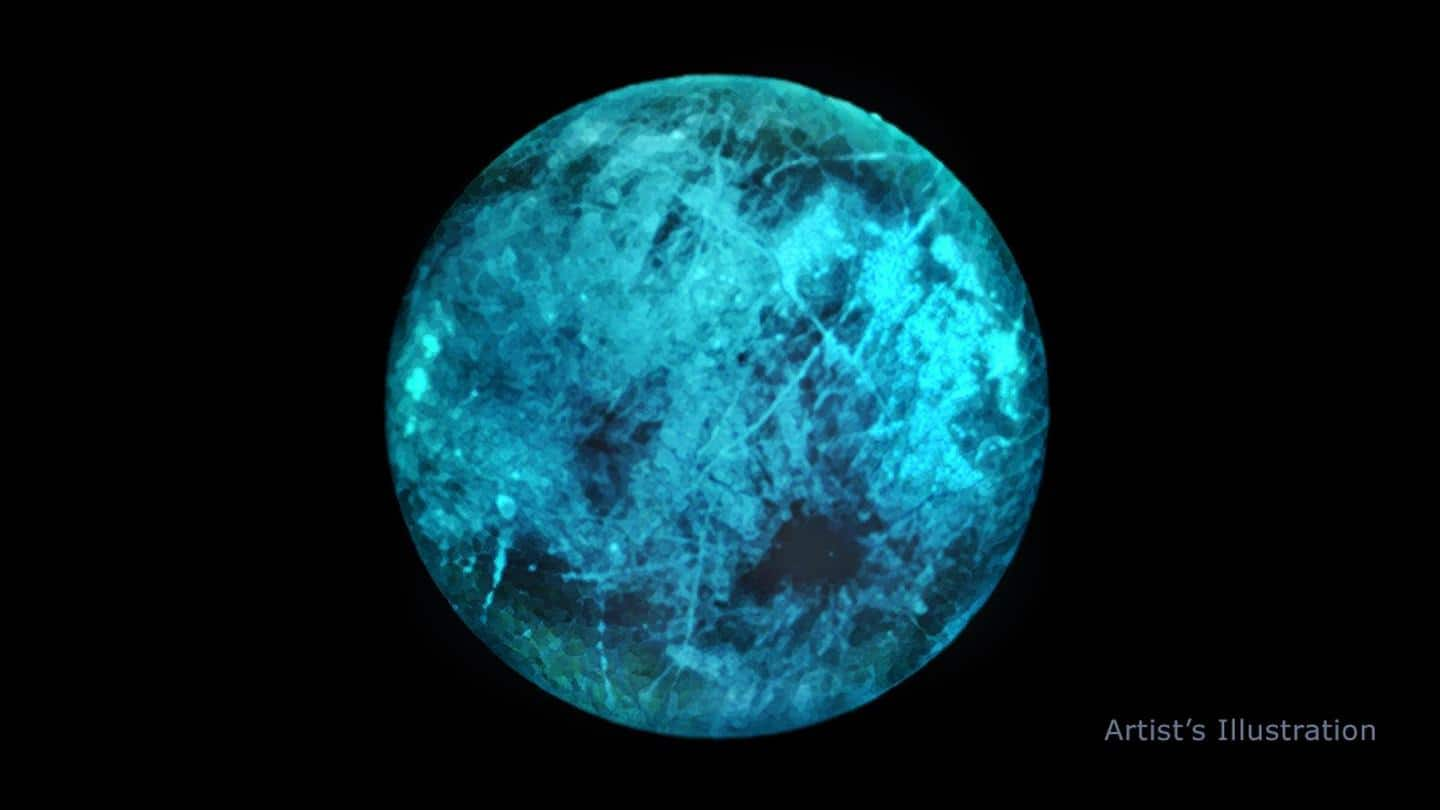
Jupiter's icy moon Europa may glow in dark: NASA researchers
What's the story
A team of researchers at NASA's Jet Propulsion Laboratory (JPL) has discovered that Europa, the icy moon of Jupiter">Jupiter, possibly emits a blue-white and blue-green glow—through its icy crust and a salty subsurface ocean—even in the dark.
They found that the high-energy radiation from Jupiter likely makes Europa's icy shell glow mysteriously, even on its night side, without the sun's help.
Here's more.
Twitter Post
The icy moon shines, even on its nightside: NASA
New lab experiments simulated the environment of Jupiter’s moon Europa and found that the icy moon shines – even on its nightside. The effect is more than just a cool visual. It could reveal clues about the composition of ice on Europa's surface: https://t.co/4kuNfLTg1s pic.twitter.com/i7RnHLKbfp
— NASA Solar System (@NASASolarSystem) November 9, 2020
Details
Can give insights into evolution of Jupiter, its moons
While researchers haven't yet observed Europa's glow directly with telescopes, a spectrometer can be used to observe and identify various signatures in the ice composition during the moon's night time.
This can give scientists insights not only into the evolution of Jupiter but its moons as well.
Notably, the latest findings are predictions from lab experiments at JPL that recreated Europa and Jupiter's interactions.
Research
Massive, subsurface ocean on Europa is potentially habitable
As part of new research, scientists at NASA's JPL found what Europa's glow would look like and what it could reveal about the composition of ice on its surface.
This is crucial because it allows scientists to learn more about what lies below Europa's icy shell by analyzing the surface. It is said that Europa has a massive, subsurface ocean, which is potentially habitable.
The glow
Different salty compounds react differently, emit unique glimmer: JPL
"Jupiter zaps Europa's surface night and day with electrons and other particles, bathing it in high-energy radiation," wrote JPL on its website.
"Different salty compounds react differently to the radiation and emit their...unique glimmer. To the naked eye, this glow would look sometimes slightly green, sometimes slightly blue or white and with varying degrees of brightness, depending on what material it is," it added.
Findings
Nightside glow could provide additional information on composition: Lead author
"We were able to predict that this nightside ice glow could provide additional information on Europa's surface composition. How that composition varies could give us clues about whether Europa harbors conditions suitable for life," stated said JPL's Murthy Gudipati, the lead author of the study.
The findings were published in the journal Nature Astronomy on November 9.
Quote
Without this radiation, Europa would look like Earth's Moon
"If Europa weren't under this radiation, it would look the way our moon looks to us - dark on the shadowed side. But because it's bombarded by the radiation from Jupiter, it glows in the dark," Mudipati said.
Europa Clipper
NASA's Europa Clipper mission set to launch in mid-2020s
Scientists would be able to better observe Europa and its mysterious glow up close in a few years, thanks to NASA's flagship mission Europa Clipper that is set to launch in the mid-2020s.
The Europa Clipper probe will observe the surface of the icy moon in multiple flybys, gathering data that will help researchers assess its habitability while orbiting its host planet Jupiter.